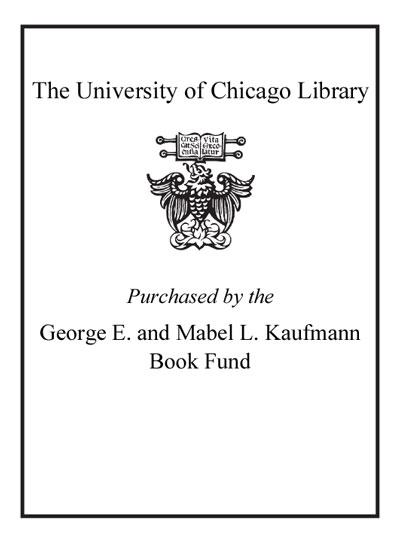Plant tropisms /
Saved in:
| Edition: | 1st ed. |
|---|---|
| Imprint: | Ames, Iowa : Blackwell Pub., 2008. |
| Description: | xv, 207 p., [10] p. of plates : ill. (some col.) ; 27 cm. |
| Language: | English |
| Subject: | |
| Format: | Print Book |
| URL for this record: | http://pi.lib.uchicago.edu/1001/cat/bib/6667023 |
Table of Contents:
- List of Contributors
- Preface
- Chapter 1. Mechanisms of Gravity Perception in Higher Plants
- 1.1. Introduction
- 1.2. Identification and characterization of gravity perception sites in plant organs
- 1.2.1. Roots
- 1.2.2. Hypocotyls and inflorescence stems (dicotyledons)
- 1.2.3. Cereal pulvini (monocotyledons)
- 1.3. The starch-statolith hypothesis
- 1.3.1. A variety of plant organs utilize sedimenting amyloplasts to sense gravity
- 1.3.2. Amyloplast sedimentation is influenced by the environment and developmental stage of the plant
- 1.4. The gravitational pressure model for gravity sensing
- 1.5. The cytoskeleton in gravity perception
- 1.6. Concluding remarks and future prospects
- 1.7. Acknowledgment
- 1.8. Literature cited
- Chapter 2. Signal Transduction in Gravitropism
- 2.1. Introduction
- 2.2. Gravity signal transduction in roots and aboveground organs
- 2.2.1. Do mechano-sensitive ion channels function as gravity receptors?
- 2.2.2. Inositol 1, 4, 5-trisphosphate seems to function in gravity signal transduction
- 2.2.3. Do pH changes contribute to gravity signal transduction?
- 2.2.4. Proteins implicated in gravity signal transduction
- 2.2.5. Global `-omic' approaches to the study of root gravitropism
- 2.2.6. Relocalization of auxin transport facilitators or activity regulation?
- 2.2.7. Could cytokinin also contribute to the gravitropic signal?
- 2.3. Gravity signal transduction in organs that do not grow vertically
- 2.4. Acknowledgments
- 2.5. Literature cited
- Chapter 3. Auxin Transport and the Integration of Gravitropic Growth
- 3.1. Introduction to auxins
- 3.2. Auxin transport and its role in plant gravity response
- 3.3. Approaches to identify proteins (hat mediate IAA efflux
- 3.4. Proteins that mediate IAA efflux
- 3.5. IAA influx carriers and their role in gravitropism
- 3.6. Regulation of IAA efflux protein location and activity during gravity response
- 3.6.1. Mechanisms that may control localization of IAA efflux carriers
- 3.6.2. Regulation of IAA efflux by synthesis and degradation of efflux carriers
- 3.6.3. Regulation of auxin transport by reversible protein phosphorylation
- 3.6.4. Regulation of auxin transport by flavonoids
- 3.6.5. Regulation of auxin transport by other signaling pathways
- 3.6.6. Regulation of gravity response by ethylene
- 3.7. Overview of the mechanisms of auxin-induced growth
- 3.8. Conclusions
- 3.9. Acknowledgements
- 3.10. Literature cited
- Chapter 4. Phototropism and Its Relationship to Gravitropism
- 4.1. Phototropism: general description and distribution
- 4.2. Light perception
- 4.3. Signal transduction and growth response
- 4.4. Interactions with gravitropism
- 4.5. Importance to plant form and function
- 4.6. Conclusions and outlook
- 4.7. Literature cited
- Chapter 5. Touch Sensing and Thigmotropism
- 5.1. Introduction
- 5.2. Plant mechanoresponses
- 5.2.1. Specialized touch responses
- 5.2.2. Thigmomorphogenesis and thigmotropism
- 5.3. General principles of touch perception
- 5.3.1. Gating through membrane tension: the mechanoreceptor for hypo-osmotic stress bacteria, MscL
- 5.3.2. Gating through tethers: the mechanoreceptor for gentle touch in Caenorhabditis elegans
- 5.3.3. Evidence for mechanically gated ion channels in plants
- 5.4. Signal transduction in touch and gravity perception
- 5.4.1. Ionic signaling
- 5.4.2. Ca 2+ signaling in the touch and gravity response
- 5.5. Insights from transcriptional profiling
- 5.6. Interaction of touch and gravity signaling/response
- 5.7. Conclusion and Perspectives
- 5.8. Acknowledgements
- 5.9. Literature cited
- Chapter 6. Other Tropisms and their Relationship to Gravitropism
- 6.1. Introduction
- 6.2. Hydrotropism
- 6.2.1. Early studies of hydrotoprism
- 6.2.2. Genetic analysis of hydrotropism
- 6.2.3. Perception of moisture gradients and gravity stimuli by the root cap and the curvature response
- 6.2.4. ABA and the hydrotropic response
- 6.2.5. Future experiments
- 6.3. Electrotropism
- 6.4. Chemotropism
- 6.5. Thermotropism and oxytropism
- 6.6. Traumatropism
- 6.7. Overview
- 6.8. Acknowledgments
- 6.9. Literature cited
- Chapter 7. Single-Cell Gravitropism and Gravitaxis
- 7.1. Introduction
- 7.2. Definitions of responses to environmental stimuli that optimize the ecological fitness of single-cell organisms
- 7.3. Occurrence and significance of gravitaxis in single-cell systems
- 7.4. Significance of gravitropism in single-cell systems
- 7.5. What makes a cell a biological gravity sensor?
- 7.6. Gravity susception-the initial physical step of gravity sensing
- 7.7. Susception in the statolith-based systems of Chora
- 7.8. Susception in the statolith-based system Loxodes
- 7.9. Susception in the protoplast-based systems of Euglena and Paramecium
- 7.10. Graviperception in the statolith-based systems of Cham
- 7.11. Graviperception in the statolith-based system Loxodes
- 7.12. Graviperception in the protoplast-based systems Paramecium and Euglena
- 7.13. Signal transduction pathways and graviresponse mechanisms in the statolith-based systems of Chara
- 7.14. Signal transduction pathways and graviresponse mechanisms in Euglena and Paramecium
- 7.15. Conclusions
- 7.16. Acknowledgements
- 7.17. Literature cited
- Color Section
- Chapter 8. Space-Based Research on Plant Tropisras
- 8.1. Introduction-the variety of plant movements
- 8.2. The microgravity environment
- 8.3. Ground-based studies: mitigating the effects of gravity
- 5.4. Gravitropism
- 8.4.1. Gravitropism: gravity perception
- 8.4.2. Gravitropism: signal transduction
- 8.4.3. Gravitropism: the curving response
- 8.5. Phototropism
- 8.6. Hydrotropism, autotropism, and oxytropism
- 8.7. Studies of other plant movements in microgravity
- 8.8. Space flight hardware used to study tropisms
- 8.9. Future outlook and prospects
- 8.10. Literature cited
- Chapter 9. Plan(t)s for Space Exploration
- 9.1. Introduction
- 9.2. Human missions to space
- 9.3. Life support
- 9.4. Genomics and space exploration
- 9.5. Nanotechnology
- 9.6. Sensor, biosensors, and intelligent machines
- 9.7. Plan(t)s for Space Exploration
- 9.8. Imagine
- 9.9. Literature cited
- Index


